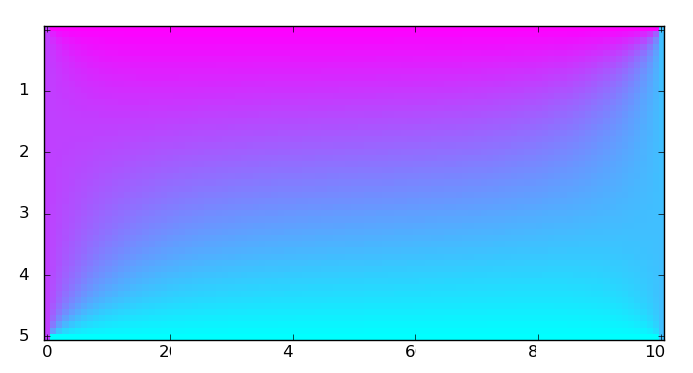Solving the heat equation

A two-dimensional non-transient rectangular system follows the heat equation where is the temperature at .
- The system is 5 units wide (vertical) and 10 units (horizontal).
- The temperatures of north, east, west and south walls are maintained at 100, 40, 80 and 20 respectively.
What is the temperature of a point located 4 units to the right of the west wall and 2 units to the bottom of the north wall?
Note : This problem might require a numerical approach.
Inspired by Himadri Chattopadhyay .
The answer is 68.698.
This section requires Javascript.
You are seeing this because something didn't load right. We suggest you, (a) try
refreshing the page, (b) enabling javascript if it is disabled on your browser and,
finally, (c)
loading the
non-javascript version of this page
. We're sorry about the hassle.
[Partial Solution]
I do not remember the entire process of solving the problem but the crux of this solution is to divide the area into a discrete grid. Provided the grid is small enough, i.e, as the cell size approaches 0, the heat equation is equivalent to the fact that every point is equal to the mean of the four points around it.
We represent this grid as a two-dimensional array with the boundaries initialized. The non-boundary cells are initialized with some arbitrary temperature. With each iteration, each cell is updated as the mean of the neighbouring cells. These are called Jacobi iterations. Ultimately, the values in the cells converge to the steady solution.